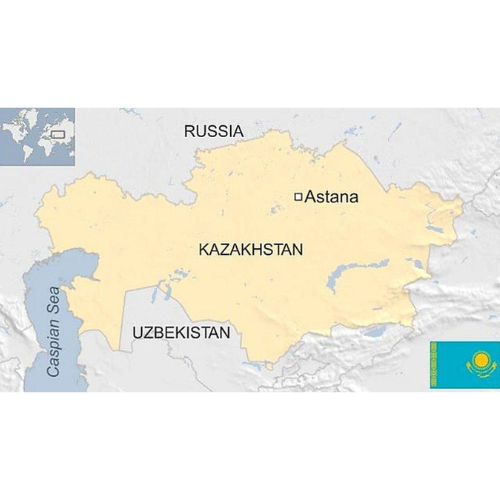Kazakhstan’s Economic Landscape in 2025: Growth Amid Fragility
Kazakhstan, Central Asia’s largest economy and a key global oil producer, is navigating a complex economic environment in 2025. While certain sectors show robust growth, underlying vulnerabilities—ranging from fiscal imbalances to external trade pressures—raise questions about the sustainability of its current trajectory.
Economic Growth: Strong but Uneven
According to the Applied Economics Research Center (AERC), the short-term economic indicator (STEI) for January–July 2025 rose to 109.3% year-over-year. This growth is largely driven by:
Construction: Up 18.5%, fueled by public infrastructure projects.
Transport and Warehousing: Surged 22.5%, benefiting from regional trade routes like the Trans-Caspian International Transport Route (TITR).
Mining: High oil production volumes continue to support the physical volume index (PVI), despite global price volatility.
However, this growth is not evenly distributed across sectors. Fixed capital investment slowed in July, and foreign trade turnover remains below last year’s levels.
Oil Dependency and Geopolitical Risk
Kazakhstan’s economy remains heavily reliant on oil exports, which account for a significant portion of its budget revenues. In July 2025, the country exceeded its OPEC+ quota by 0.4 million barrels per day, signaling aggressive production strategies.
Yet, this approach carries risks. The AERC revised its average Brent oil price forecast for 2025 down to $74.60 per barrel, citing geopolitical instability and tariff measures from key trading partners like Canada, Mexico, and China. Earlier estimates had placed the price at $81.00, highlighting the fragility of Kazakhstan’s fiscal planning.
The government has formulated three revenue scenarios—optimistic, baseline, and pessimistic—to hedge against oil price fluctuations. However, recent Middle East tensions and U.S. tariff policies have pushed global oil prices toward the pessimistic end of the spectrum.
Fiscal Challenges and Budget Execution
Kazakhstan’s fiscal position has weakened in 2025. The republican budget is underperforming due to shortfalls in transfers from the National Fund, the country’s sovereign wealth reserve. Lower-than-expected revenues have led to reduced government expenditures, particularly in non-essential sectors.
While state budget funds remain the primary driver of investment—accounting for 22.4% of total investment—their effectiveness is limited by bureaucratic inefficiencies and slow execution rates.

Trade and External Balance
Kazakhstan’s foreign trade turnover is contracting. Although the rate of export decline is slowing, the overall level remains significantly below 2024 figures. This trend is compounded by:
Weaker demand from China and Russia, Kazakhstan’s top trading partners.
Non-tariff barriers that restrict market access for Kazakh goods.
Income outflows and a weakening exchange rate, which erode competitiveness.
The country’s efforts to diversify exports—through its Export Acceleration Program—have yielded some success, with over 557 non-resource enterprises entering foreign markets since 2020. However, these gains are not yet sufficient to offset the decline in traditional exports.
Banking and Credit Conditions
Banks have maintained liquidity, and consumer lending continues to grow modestly. However, rising debt levels and declining revenues pose risks to financial stability.
The central bank has kept interest rates elevated to combat inflation, which remains above target due to supply chain disruptions and currency depreciation.
Diversification and Innovation
Kazakhstan’s long-term strategy hinges on economic diversification. The government’s “Born Bold” campaign, launched in 2024, aims to attract foreign investment in sectors like:
Logistics and Transportation
Youth and Education
Energy and Environment
Tourism and Culture
Partnerships with global firms such as Microsoft, Amazon, and Mastercard reflect growing investor confidence. Moreover, Kazakhstan ranks 9th globally on the UN Education Index and boasts a 100% literacy rate, positioning its workforce as a key asset for future growth2.
In energy, Kazakhstan is the 9th-largest producer of wind power, with the potential to generate ten times its national need. This renewable energy push could reduce oil dependency and enhance sustainability.
